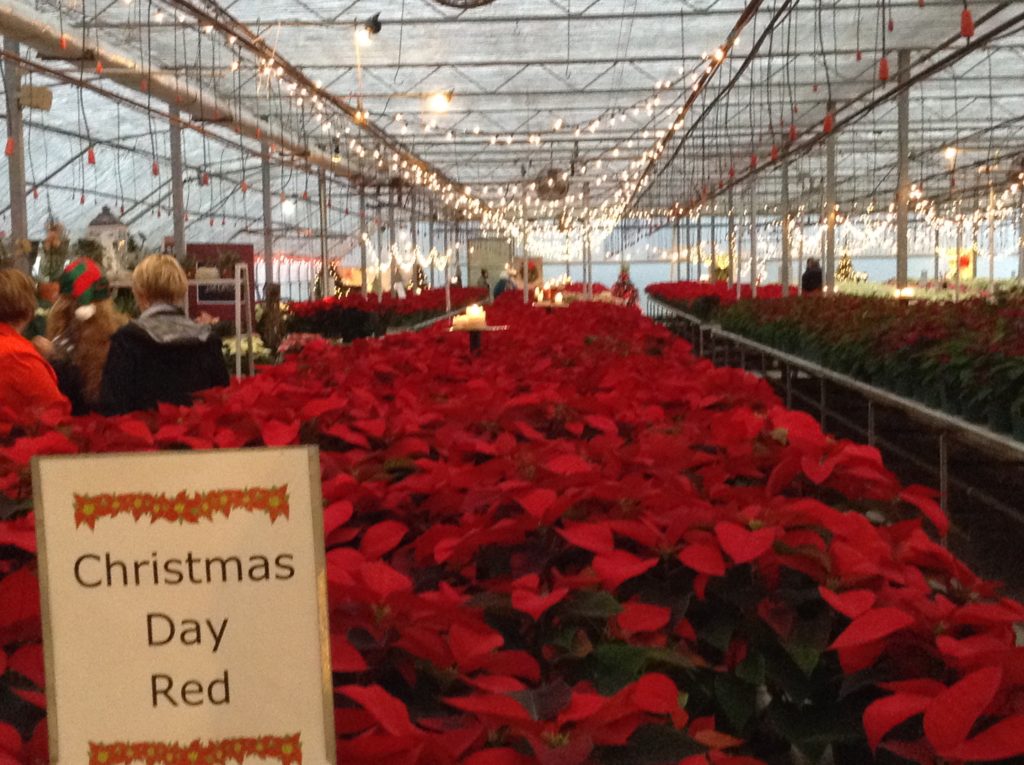It’s Still Just Dirt, The Tillsonburg News – December 2016
by Angela Lassam
Merry Christmas to all! Have you ever given thought to question why we adorn our homes this time of year?
Many tree branches and other evergreens are taken inside for decoration and I wondered the reason. I thought to enlighten folk to their meaning so here are my findings.
Greenery such as cedar, ivy, holly originated as far back as Roman times and even further. They were taken inside to celebrate the Winter Solstice and depict everlasting life. As Christianity arrived holly was thought to replicate the crown of thorns and the berries were the drops of blood at the crucifixion. Ivy was used to show the need for support as it is a clinging vine. Evergreens showed continued life and the rebirth at springtime.
The Christmas tree tradition actually started in Germany in the 16th century where the peasants believed it would keep illness and evil spirits away. It did not appear as a home decoration until 1847 when Queen Victoria encouraged by Prince Albert, a German started the tradition of a decorated tree to celebrate Christmas. This tree was decorated with many coloured ornaments (the European glass ones) and many other things. She was known for her extravagance with color and style and so it became the tree as we know today. The German settlers started the tradition in America around 1830. They decorated them with apples to represent the Garden of Eden and added nuts and popcorn and homemade cookies and candy. The trees are usually spruce, fir or balsam.
The poinsettia plant has become the most popular plant at Christmas .They are usually red although there are all colors available in most nurseries (blue, cream, pale purple and white /red stripped). Some think the flower resembles a star as seen in Bethlehem and there are many other ideas suggested around the world. It is the red original color that attracted its use at Christmas time and they are the most popular plants especially as gifts that can be almost any size.
The poinsettia (Euphorbia Pulcherrima) was found in Mexico in 1828 by Joel Roberts Pionsett, a botanist from South Carolina and ambassador in Mexico. He found you could grow plants from cuttings and introduced them to America and later Canada and the world. In Mexico it is sometimes considered a weed or wild shrub. It grows in deciduous tropical forests at moderate elevations and can be up to 10 feet tall.
It is not actually a flowering plant but the colored leaves (to many the flower) are called bracts. The leaves once considered poisonous have been proven to be unsafe due to the milky sap which is latex and a skin irritant. If ingested the leaves will cause diarrhea and vomiting. It is wise to keep out of reach of puppies and kittens especially.
Poinsettias in the home like a sunny location, free from drafts and cooler nights. They do not like wet feet so only water when dry to touch by setting in water then letting drain (make sure if still in plastic there are drainage holes in the bottom). Fertilize the same as any other houseplant.
The Tillsonburg Horticultural Society resumes their monthly meetings on January 3rd @ 7.30pm in the Seniors Centre Auditorium , Tillsonburg Community Centre. Allyson McDonald will be giving a presentation on the beautiful English gardens in Cornwall and Devon.
Members just a reminder that annual membership renewals @ $15 are due. Non-members pay $2 per meeting. Everyone welcome.
For information about the Tillsonburg Horticultural Society visit tillsonburghorticultural.ca online.
